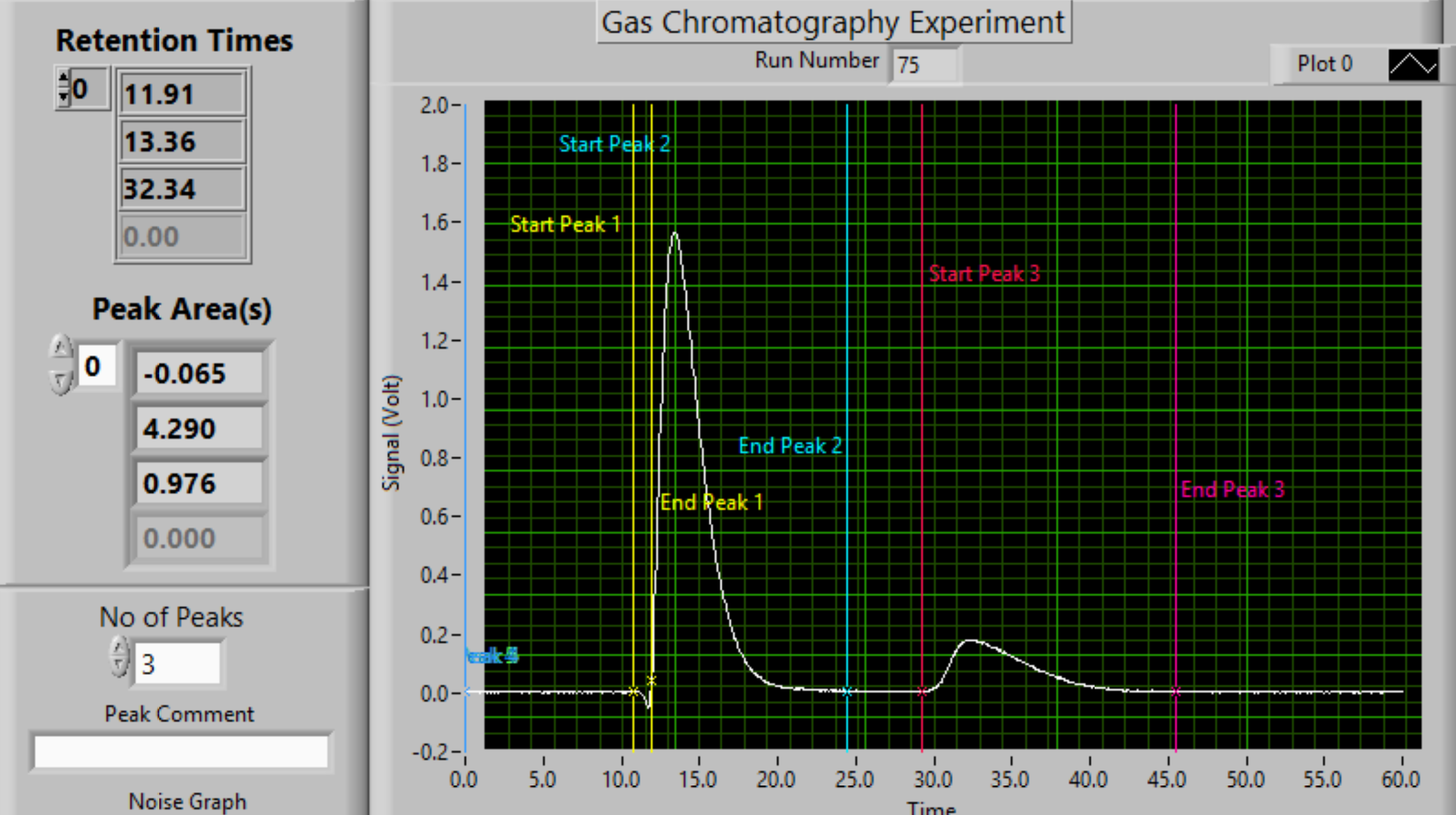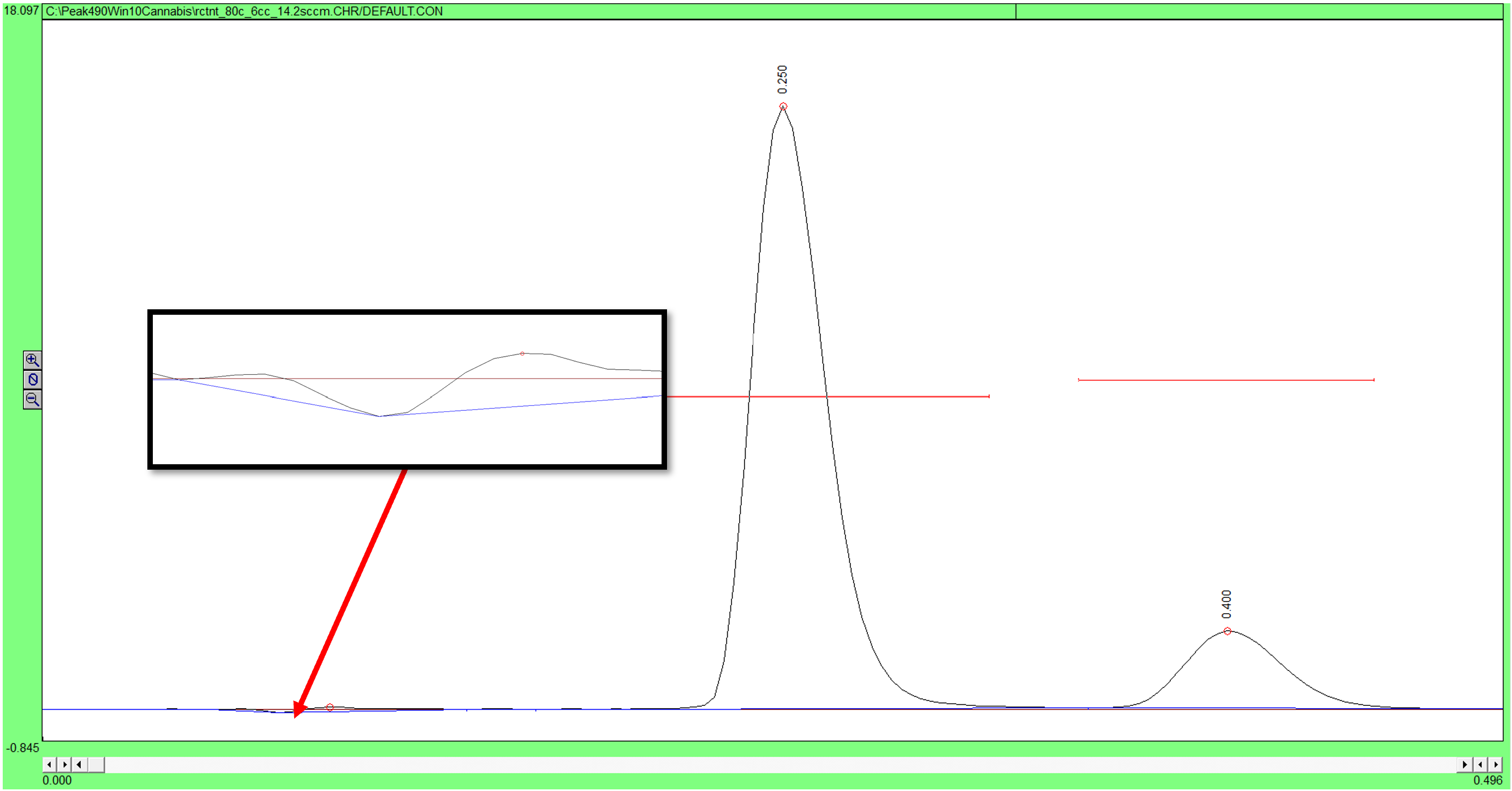Results
Final Prototype
The final prototype of our approach is shown in Figure 14.

Testing the GC
After going through the process of repairing the GC and given the importance of an in-line GC, as desired by the Project Sponsor, it was essential to test the GC. The reactant gases were analyzed using the GOW-MAC GC. The three different peaks indicate the presence of three distinct gases, as expected.

The chromatogram results from the GOW-MAC GC were confirmed by using discrete injections into a Buck-Scientific GC. The chromatogram from the Buck-Scientific GC is shown in Figure 16.

To put this together, a reactor was loaded with a P-K-Mo2C catalyst and run for 2 hours. However, due to the large amount of time needed to obtain products with this catalyst, no products were observed in the span of two hours. The results are shown in Figure 17.

Due to the oxophilic nature of the transition metal carbides (P-K-Mo2C), no products were formed after 120 mins on stream. Juneau et al.[1] collected data after reduction for 2 hours at 300 psi and 300 °C and after exposure to stream for 7-12 hrs.
